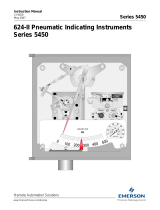
Chapter 2 - TeleFlow Standard ACCOL Load
TeleFlow™ Standard ACCOL Load
2-2
Configurable 1, 2, 5, 15, and 60 second calculation interval.
Pulse counting and scaling.
Configurable automatic dial-out on alarm occurrence. (NOT YET SUPPORTED)
Control of an external radio.
Battery charge regulator.
The main task of the TeleFlow Standard Load executes every second and 'wakes up'
the hardware (out of low-power mode) and collects 'live' Differential Pressure (DP),
Static Pressure (P) and Temperature (T) input data and status data from the
internal sensor conditioning circuitry. In accordance with the API MPMS, Chapter
21 requirements, these are averaged over the configured Calculation interval for
use in the flow calculations; averaging is 'flow-dependent' in that it only occurs
when the DP value is above a configured 'cutoff' level.
The live DP and P values are used to compute an Extension value (the square root
of the product of the live DP and P) every second; Extension values are added over
the Calculation interval, which can be configured at 1, 2, 5, 15 or 60 seconds. The
interval is configured by the user to obtain the best balance of power consumption
and calculation rate. If a calculation is not scheduled the task completes and the
hardware re-enters sleep mode.
At the end of a Calculation interval a full flow calculation is performed. Averaged
input values for the interval are used in the FPV, AGA8Detail, or AGA8Gross
modules to obtain gas compressibility factors. These are then used in an AGA3
(1985 or 1992) equation to compute the flow rate in MSCF per hour. The Extension
used in the AGA3 calculation is an average Extension for the Calculation interval
NOTE:
The EGM 3530 only supports a subset of the ACCOL module library thus some
ACCOL modules will not operate. See the ’Hardware and Software Requirements’
section of the ACCOL II Reference Manual (document# D4044) to find out which
modules are supported.
In addition, the EGM-3530 will not provide some functions that are common in
Bristol products; among these are Communication Statistics, Crash Blocks, On-line
Diagnostics, Task slip information, and Task rate information.



























